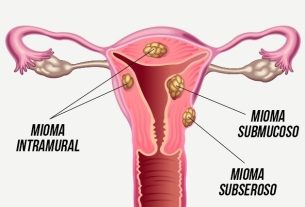Know how to identify which foods are healthy and which ones should be left out of our diet, is essential to have quality of life.
In this guide, we will talk about what healthy foods are, the relevance of the food pyramid and we will show you a list of healthy and unhealthy foods for you to keep an eye on.
Continue reading.
Healthy eating: what it is and importance
A healthy eating refers to the balanced and adequate consumption of nutrients necessary to sustain an individual’s health and well-being.
This practice involves consciously choosing foods that provide the body with essential nutrients, including vitamins, minerals, proteins, carbohydrates and healthy fats.
Among the main elements that make up a healthy diet, we have:
- Variety of foods: includes a wide range of foods to ensure you get a variety of nutrients.
- Balance: maintains adequate proportions between food groups, such as carbohydrates, proteins, fats, fruits and vegetables.
- Moderation: Control portions to avoid overeating, even with healthy foods.
- Hydration: drink enough water daily to maintain adequate hydration.
When we talk about healthy eating, we realize that its importance is undeniable, especially for:
- Physical health: contributes to the proper functioning of the body, preventing diseases and promoting general health.
- Weight control: a balanced diet helps with weight control, reducing the risk of obesity and its complications.
- Mental health: Healthy eating can positively influence emotional and cognitive well-being.
- Prevention of diseases: may reduce the risk of chronic diseases such as diabetes, hypertension and cardiovascular disease.
- Improved Quality of Life: provides adequate nutrients and contributes to a more active and higher quality life.
- Strengthening the Immune System: provides essential nutrients that support the immune system, helping to resist infections.
- Healthy Longevity: a balanced diet is associated with a longer and healthier life.
Adopting healthy eating habits is fundamental to promoting health in the short and long term, being an essential tool in prevention and maintenance of physical and mental health.
20 healthy foods
To help you choose good items for your healthy eatingwe have put together a list of the 20 most sought after healthy foods on the market.
Check out!
Rich in protein, fiber and other diverse nutrients, quinoa is a versatile grain that provides sustainable energy.
It is worth mentioning that the consumption of grains or any other natural product must contain a extra care when choosing the company that manufactures them. After all, depending on the process used, the final product can be completely modified.
In this case, we recommend Taina Alimentos as the safest option on the market.
The Curitiba industry is a reference in natural products, ensuring that its production is free from cross-contamination – which also facilitates consumption for those who are intolerant to lactose, gluten or allergies in general.
Visit the website to learn more!
Source of healthy fats, such as omega-3, as well as vitamins and minerals, contributing to cardiovascular health.
Rich in omega-3 fatty acids, salmon is beneficial for heart and brain health.
A source of iron, fiber and vitamins, spinach is a green leafy vegetable that strengthens the immune system.
Rich in soluble fiber, oats help control cholesterol and provide slow-release energy.
Packed with vitamins, minerals and antioxidants, broccoli is known for its benefits for cellular health.
Chia seeds are loaded with fiber, protein and omega-3 fatty acids, promoting satiety and cardiovascular health.
Rich in fiber and antioxidants, apples are a healthy option for regulating digestion and promoting heart health.
A source of probiotic proteins, yogurt benefits digestive health and strengthens the immune system.
Rich in beta-carotene, carrots are excellent for eye health and contribute to healthy skin.
Packed with fiber, protein and healthy fats, almonds are a nutritious snack that helps with satiety.
In addition to vitamin C, pineapple contains bromelain, an enzyme that facilitates digestion.
A source of lycopene, a powerful antioxidant, tomatoes help protect against cellular damage.
Rich in fiber, vitamins and minerals, sweet potatoes are an excellent source of complex carbohydrates.
Source of vegetable proteins, fiber and iron, black beans are a healthy option for the diet.
Rich in antioxidants, açaí is known to promote cardiovascular health and combat oxidative stress.
Turmeric contains curcumin, a powerful natural anti-inflammatory with several health benefits.
Full of vitamin C, fiber and antioxidants, kiwi contributes to the health of the immune system.
Rich in zinc, magnesium and fatty acids, pumpkin seeds are beneficial for men’s health.
Composed mainly of water, cucumber is a hydrating option and contributes to skin health.
20 unhealthy foods
We also indicate the 20 Non-healthy food for you to stay away from them.
See below!
Rich in sugars and trans fats, stuffed cookies are highly processed foods and low in essential nutrients.
High levels of sugar and chemical additives make soft drinks an unhealthy choice. Furthermore, they are associated with health problems such as obesity and metabolic diseases.
Burgers, fries and sodas at fast food restaurants are often high in calories, saturated fat and sodium, contributing to an unhealthy diet.
- Industrialized Snacks
Full of sodium, saturated fats and additives, industrialized snacks are not very nutritious options and can lead to health problems.
They contain high concentrations of caffeine, sugars and other stimulants, which can cause negative effects on cardiovascular health.
Breakfast cereals loaded with added sugars offer few nutritional benefits and may contribute to weight gain.
Low in nutrients and rich in sodium, instant noodles are an unhealthy choice for those looking for a balanced diet.
- Processed Hot Dog
Processed sausages and hot dogs often contain chemical additives and high levels of sodium, and are associated with health risks.
Fried dough, sugary coating and saturated fats make donuts an unhealthy option, contributing to excessive consumption of empty calories.
Rich in saturated fats and sodium, bacon is considered a processed meat associated with cardiovascular risks.
- Excessive Alcoholic Drinks
Excessive alcohol consumption can lead to health problems such as liver and cardiovascular disease and an increased risk of dependence.
Containing trans fats, hydrogenated margarine may increase your risk of heart disease compared to healthier alternatives such as olive oil.
- Instant Breakfast Cereals
Many instant breakfast cereals are high in added sugars, offering little nutritional value.
With high levels of sodium, saturated fats and additives, frozen pizza is an unhealthy option when consumed regularly.
Fried in unhealthy oil and loaded with sodium, ready-made fries are not a recommended choice for a balanced diet.
With high levels of sugar and saturated fats, chocolate bars are low-calorie and low-calorie snacks.
Often loaded with sugary syrup, pickled cherries have more added sugar than nutritional benefits.
- Sweetened Hazelnut Cream
Although popular, many hazelnut spreads contain large amounts of added sugars, contributing to empty calories.
- Flavored Microwave Popcorn
Coated with artificial butter and high-sodium seasonings, flavored microwave popcorn can be nutritionally disadvantageous.
- Processed Foods High in Trans Fat
Processed foods that contain trans fats, such as some types of cakes and cookies, are associated with cardiovascular risks.
In the next topic, we will address some indications about the food pyramid and how it can help you have a healthier diet.
What do you need to know about the Food Pyramid?
The food pyramid is a graphic representation which organizes foods into groups, indicating the quantity and frequency with which they should be consumed to maintain a balanced and healthy diet.
Its importance is linked to providing simple and visual guidelines to promote appropriate food choices, considering the variety of essential nutrients for the body.
In summary, the food pyramid is structured as follows:
Base: represents the foods that should be consumed in greater quantity. Include foods rich in carbohydrates, such as whole grains, bread, rice and pasta, which are great sources of energy.
Second level: includes protein-rich foods such as lean meats, fish, eggs, legumes and dairy products. It indicates the importance of variety in this group to guarantee different nutrients.
Third Level: Emphasizes fruit and vegetable intake, providing vitamins, minerals and fiber. It is recommended to consume a wide variety of colors and types to obtain diverse nutritional benefits.
Fourth Level: represents healthy fats, such as those found in vegetable oils, avocados and nuts. Although in smaller quantities, these fats are essential for important bodily functions.
Topo: At the top of the pyramid are foods that should be consumed in moderation. This includes sweets, foods high in sugar, saturated fats and processed foods.
See a visual summary below:
By following the recommendations of food pyramidpeople can create healthy eating habits, promoting long-term health.
However, it is important to adapt these guidelines to individual needs, taking into account factors such as age, gender, level of physical activity and specific health conditions.

Sign up for our newsletter and stay up to date with exclusive news
that can transform your routine!
Warning: Undefined array key "title" in /home/storelat/public_html/wp-content/plugins/link-whisper-premium/templates/frontend/related-posts.php on line 12
Warning: Undefined array key "title_tag" in /home/storelat/public_html/wp-content/plugins/link-whisper-premium/templates/frontend/related-posts.php on line 13




